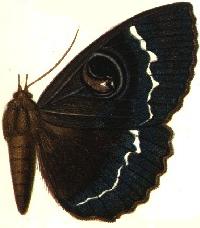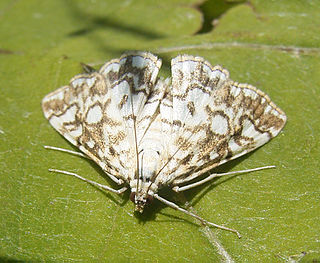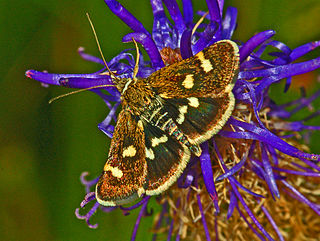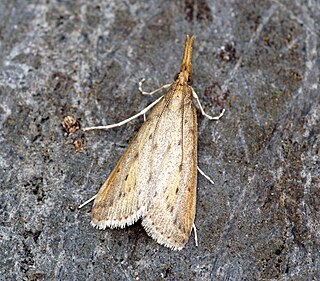
Mount Erebus is the second-highest volcano in Antarctica, the highest active volcano in Antarctica, and the southernmost active volcano on Earth. It is the sixth-highest ultra mountain on an island, and the second-highest in Antarctica. With a summit elevation of 3,794 metres (12,448 ft), it is located in the Ross Dependency on Ross Island, which is also home to three inactive volcanoes: Mount Terror, Mount Bird, and Mount Terra Nova.

HMS Erebus was a Hecla-class bomb vessel constructed by the Royal Navy in Pembroke dockyard, Wales, in 1826. The vessel was the second in the Royal Navy named after Erebus, the personification of darkness in Greek mythology.

Spilomelinae is a very species-rich subfamily of the lepidopteran family Crambidae, the crambid snout moths. With 4,135 described species in 344 genera worldwide, it is the most speciose group among pyraloids.

Erebus is a genus of moths in the family Erebidae.
Charltona is a genus of moths of the family Crambidae. The genus was erected by Charles Swinhoe in 1886.

Nosophora is a genus of moths in the family Crambidae.

Chrysocraspeda is a genus of moths in the family Geometridae described by Charles Swinhoe in 1893.
Micrulia is a genus of moths in the family Geometridae.

Scopula is a genus of moths in the family Geometridae described by Franz von Paula Schrank in 1802.

Erebus aerosa is a moth of the family Erebidae first described by Charles Swinhoe in 1900. It is found in Indonesia.

Erebus superba is a moth of the family Erebidae first described by Charles Swinhoe in 1908. It is found in the Indian state of Meghalaya and in Nepal.

Acentropinae is a fairly small subfamily of the lepidopteran family Crambidae, the crambid snout moths. Species of this subfamily are exclusively found in wetlands and aquatic habitats.
Glaucoclystis sinuosa is a moth in the family Geometridae first described by Charles Swinhoe in 1895. It is found in the north-eastern Himalayas.

Odontiinae is a subfamily of moths of the family Crambidae. The subfamily was described by Achille Guenée in 1854.

Schoenobiinae is a subfamily of the lepidopteran family Crambidae. The subfamily was described by Philogène Auguste Joseph Duponchel in 1846.
Erebus lombokensis is a moth of the family Erebidae first described by Charles Swinhoe in 1915. It is found on Lombok in Indonesia.
Erebus sumbana is a moth of the family Erebidae first described by Charles Swinhoe in 1918. It is found on the Indonesian islands of Seram and Sumba and the Philippine island of Luzon.
Erebus ipsa is a moth of the family Erebidae first described by Charles Swinhoe in 1918. It is found in Sri Lanka.









